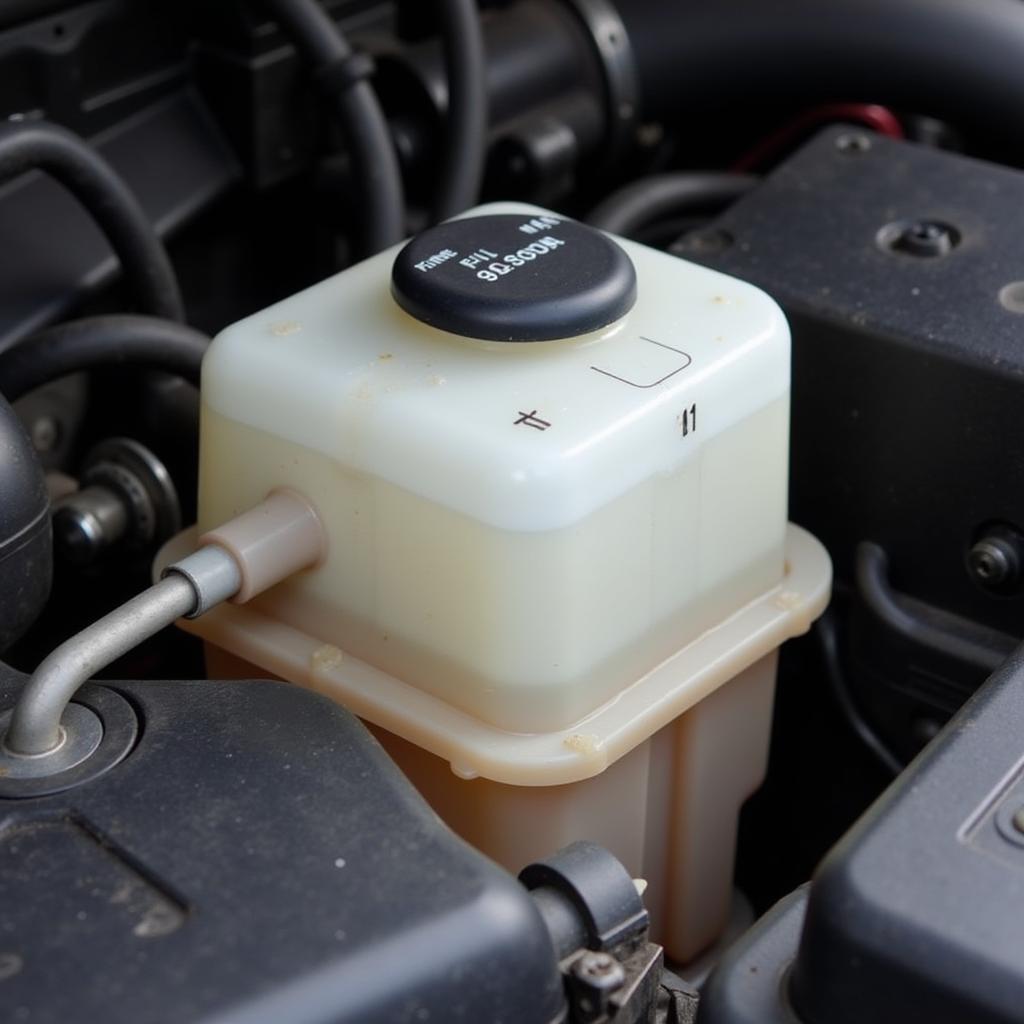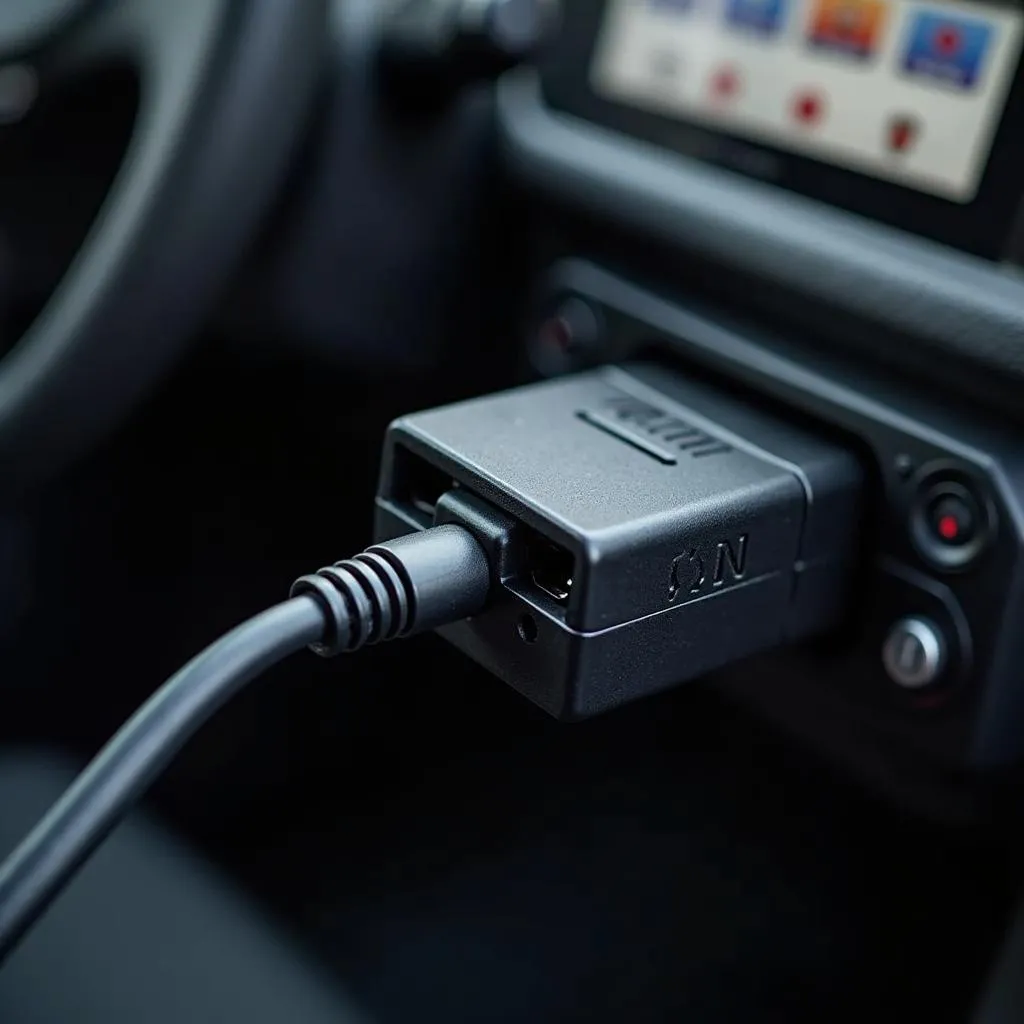The brake warning light on your 2004 Ford F150 dashboard is a crucial safety feature, illuminating when the vehicle’s onboard computer detects an issue within the braking system. Ignoring this warning could lead to reduced braking performance and potentially dangerous situations. This comprehensive guide will delve into the common causes behind a 2004 Ford F150 brake warning light and provide effective solutions to address them.
Understanding Your Brake Warning Light
The brake warning light serves multiple purposes. It illuminates briefly when you start your engine as a bulb check, confirming the system is functional. However, if the light stays on or illuminates while driving, it signals a potential problem demanding immediate attention.
Common Causes of a 2004 Ford F150 Brake Warning Light
Several factors can trigger the brake warning light in your F150. Here’s a breakdown of the most prevalent culprits:
1. Low Brake Fluid Level
One of the most frequent causes is low brake fluid. Your F150 utilizes a hydraulic braking system, relying on brake fluid to transmit force from the pedal to the wheels. When the fluid level drops, usually due to a leak or worn brake pads, it triggers the warning light.
2. Worn Brake Pads
Brake pads are designed to wear down over time with friction. When they reach a certain thinness, a sensor within the brake pad assembly activates the warning light, indicating the need for replacement.
3. Faulty Brake Light Switch
Your F150’s brake light switch, located behind the brake pedal, plays a dual role: activating the brake lights and signaling the braking system. A malfunctioning switch can disrupt these functions, leading to a lit warning light and potentially inoperable brake lights.
4. ABS Issues
Your 2004 Ford F150 is equipped with an Anti-lock Braking System (ABS). A dedicated ABS warning light usually accompanies problems within this system. However, in some cases, a general brake warning light might illuminate instead, signifying an issue with the ABS module, wheel speed sensors, or related wiring.
5. Master Cylinder Malfunction
The brake master cylinder acts as the heart of your braking system, pressurizing and distributing brake fluid. A failing master cylinder, often due to internal leaks or seal damage, can hinder brake performance and activate the warning light.
Troubleshooting Your 2004 Ford F150 Brake Warning Light
While it’s recommended to consult a qualified mechanic for a thorough diagnosis, here are some initial steps you can take to troubleshoot the issue:
-
Check Brake Fluid Level: Safely park your vehicle on a level surface and allow the engine to cool. Locate the brake fluid reservoir under the hood, typically near the firewall on the driver’s side. Check the fluid level against the minimum and maximum markings on the reservoir.
-
Inspect Brake Pads: If comfortable, you can visually inspect your brake pads for wear. Look through the spaces between the wheel spokes for the brake caliper and pad assembly. Severely thin pads warrant immediate replacement.
-
Test Brake Lights: Have someone press the brake pedal while you check if both brake lights are functioning correctly. If not, a faulty brake light switch might be the culprit.
When to Seek Professional Help
It’s crucial to remember that tampering with your vehicle’s braking system without proper knowledge and experience can compromise safety. If your brake warning light persists or you’re unsure about any of the troubleshooting steps, it’s best to seek assistance from a qualified mechanic specializing in 2004 Ford F150s.
“Addressing brake issues promptly is paramount for your safety and the longevity of your vehicle,” advises John Miller, a veteran automotive technician with over 20 years of experience specializing in Ford trucks. “Don’t hesitate to seek professional help when needed.”
Conclusion
The brake warning light on your 2004 Ford F150 is a critical safety indicator that should never be ignored. Understanding its potential causes empowers you to address the issue promptly and effectively, ensuring the optimal performance of your braking system and, most importantly, your safety on the road.


